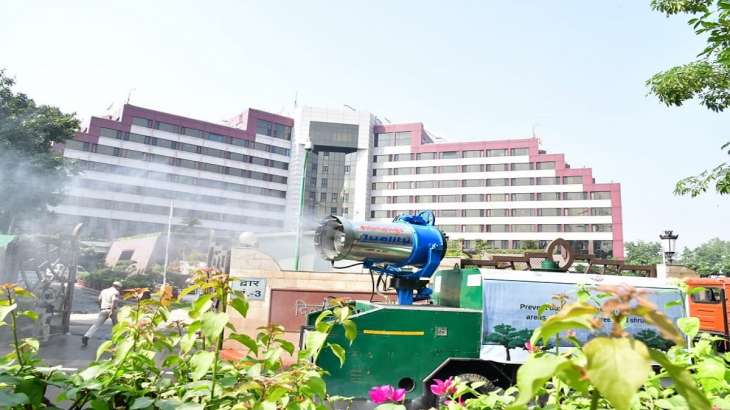The private sector can play an instrumental role through its CSR efforts to address the deteriorating air quality and assist in the fight against air pollution in India. Corporations can reduce their carbon footprint by adopting clean energy. Increased adoption of solar energy related infrastructure can address the twin concerns of air pollution and climate change.
Businesses can successfully address the interconnected concerns of air pollution and climate change. For example, Cummins India Limited started the “Creating Oxygen Hubs” drive in Pune, Maharashtra, as a major CSR initiative to enhance air quality. Cummins worked with a variety of NGOs, civic agencies, Maharashtra’s forest and defence departments, and local volunteers to plant over 35,000 trees in the city over several phases.
Some businesses are attempting to address the environmental concern by converting rice straws – a harvesting leftover that contributes significantly to air pollution when burned – into raw material as part of a sustainably responsible endeavour. Corporations operating in the crop-burning zones can work with farm producer organisations to collect crop leftovers by purchasing agro-waste and using it as biomass fuel for manufacturing activities.
Focus on Green sectors: Green sectors such as clean energy and e-mobility are likely to be the driving force for developing and implementing tangible solutions to improve air quality. A dedicated green focus could play an instrumental role in catalysing growth of such green industries and simultaneously addressing the twin problems of air pollution and climate change.
Innovations & Technology Solutions: Since 2014, more than 40 environmental startups have been set up in India with a singular goal – to combat the country’s air pollution crisis. These companies and initiatives are trying to solve two problems that can plague the public sector: difficulty in large-scale coordination and a lack of tech solutions. Business and industry can significantly accelerate momentum towards achieving India’s air quality standards by providing the necessary investment, technical expertise and large-scale coordination. For example, IKEA, a Swedish multinational group launched a collection in 2019 that used rice straws (crop residue) as raw material for furniture and home accessories. IKEA’s innovative solution showcases the potential of repurposing a waste product into an economically viable resource that reduces air pollution.
Investments made through Corporate Social Responsibility: CSR funds can be effectively utilised by businesses to address the interrelated challenges of air pollution and climate change. A notable CSR initiative to improve air quality is the “Creating Oxygen Hubs” drive, launched by Cummins India Limited in Pune, Maharashtra. Cummins partnered with various NGOs, civic authorities, the Maharashtra forest department and defence department, and local volunteers to plant more than 35,000 trees in the city in multiple phases.
Adopting Community-Based Solutions: There are various community-based solutions that can be incorporated to mitigate the growing negative impacts of air pollution on vulnerable communities. For example, women in rural areas can be engaged in entrepreneurial projects of selling clean cooking fuel, and who can then build capacities within the rural communities to use and switch to cleaner cooking methods. The community-based approach of women participating in capacity-building initiatives to represent the value of cleaner cooking fuel to households can attract households towards this lifestyle and create awareness of the significant improvement in health these changes would bring. The immediate measures that should be utilised to mitigate the impacts of air pollution include appropriate financial investment from the government, awareness generation of the health impacts of indoor pollution and receding forest covers, and the participation of vulnerable communities in decision-making.
